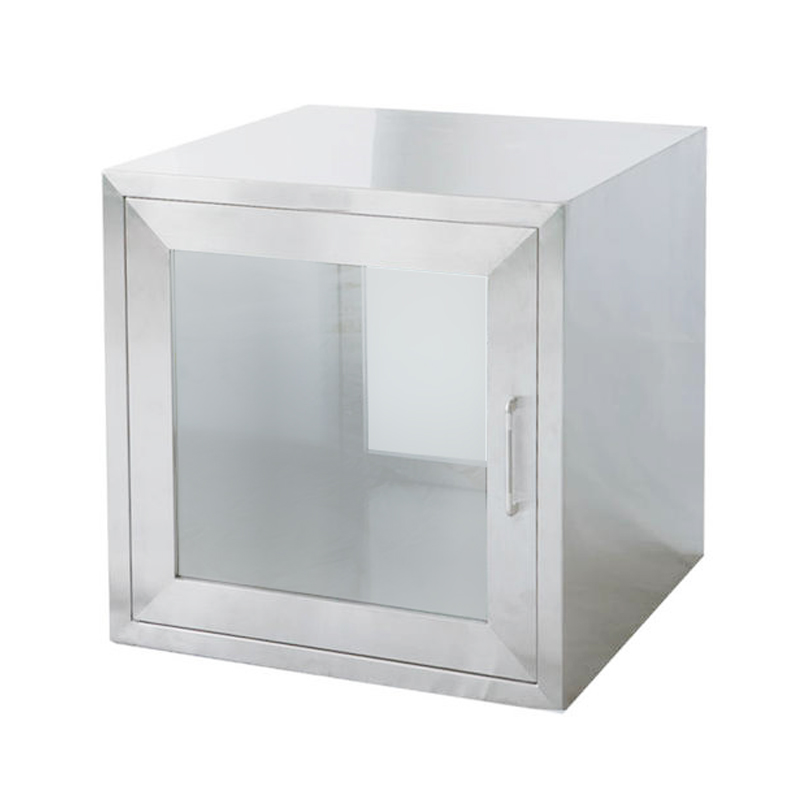

In various industries, efficiency and cleanliness are p […]
In various industries, efficiency and cleanliness are paramount, especially in environments where contamination control is critical. A pass through box is one of those simple yet ingenious solutions designed to streamline processes while ensuring safety and hygiene. But what exactly is a pass through box, and how can it make a difference in your operations? Let’s dive into its features, uses, and benefits.
The box itself is usually constructed from durable, easy-to-clean materials such as stainless steel, which is highly resistant to bacteria and other contaminants. It typically features sealed doors on both sides that can be opened individually, ensuring that the areas remain isolated from each other.
The basic function of a pass through box is simple: it allows for the safe transfer of items between different environments. Here's how it works:
Transfer Item into Box: One side of the pass through box is positioned in a controlled or hazardous environment. Items, whether packages, tools, or equipment, are placed into the box through this side.
Sealing Mechanism: The box doors are tightly sealed to prevent contaminants from passing into the receiving area.
Transfer to Another Room: Once the items are securely inside the box, the other side door opens in a separate room or area, allowing the items to be retrieved.
This process ensures that contaminants are contained within the box, and personnel do not have to enter or exit the controlled area frequently, reducing the risk of contamination.
1. Cleanrooms and Laboratories: In pharmaceutical manufacturing, biotechnology labs, and medical device production, cleanliness and contamination control are crucial. A pass through box allows workers to safely move materials such as raw chemicals, equipment, or samples between sterile environments without introducing foreign particles or pathogens.

2. Hospitals and Medical Facilities: Hospitals use pass-through boxes to transfer contaminated items (e.g., medical tools or laundry) from isolation areas to cleaning or sterilization rooms without cross-contaminating other spaces. This helps maintain strict infection control protocols.
3. Food Processing: In the food industry, maintaining hygiene is a top priority. Pass through boxes are used to transport raw materials, ingredients, or even finished products between different stages of production, ensuring that contamination risks are minimized.
4. Manufacturing and Warehousing: In non-hazardous environments like warehouses or manufacturing plants, pass-through boxes can be used for transferring parts, tools, or materials between areas without disrupting workflow or exposing sensitive items to dust and dirt.
The implementation of a pass through box can have several advantages, particularly in industries that require strict hygiene, safety, and efficiency standards.
Prevention of Cross-Contamination: One of the most significant benefits of using a pass through box is its ability to reduce the risk of cross-contamination between clean and non-clean areas. This is particularly important in industries like pharmaceuticals, where even minor contamination can compromise the quality of products.
Increased Efficiency: By using a pass-through system, workers can quickly transfer materials without leaving the controlled environment. This leads to time savings and fewer interruptions in the workflow, especially in critical areas like laboratories and manufacturing lines.
Enhanced Safety: In environments where hazardous materials or pathogens are present, pass through boxes provide a safe method of handling and transferring items. Workers can avoid direct contact with dangerous substances, thereby reducing the risk of exposure.
Simplified Cleaning: The design of pass through boxes makes them easy to clean and maintain. Stainless steel and other non-porous materials can be wiped down quickly, preventing the buildup of dirt and bacteria that might otherwise interfere with the integrity of the environment.
Reduced Human Traffic: Since the pass through box eliminates the need for personnel to move in and out of sensitive areas, it reduces human traffic, which can lower the chances of contaminating controlled zones.
While pass through boxes are incredibly beneficial, they do have some limitations. The system’s effectiveness relies heavily on proper sealing and maintenance. If the doors don’t close tightly or if the box itself becomes damaged, contaminants can easily bypass the system, compromising the entire process.
Additionally, while they can be an excellent way to move smaller items, large or bulky materials might require different handling methods.
A pass through box can be a game-changer for businesses that prioritize hygiene, efficiency, and safety. Whether in healthcare, food production, or high-tech manufacturing, this simple yet effective solution helps streamline operations while ensuring that contamination risks are minimized. However, it’s important to choose a pass-through system that fits your specific needs and to maintain it properly for maximum effectiveness.
Our new models offer superb design;competitive prices and their new features give them distinct advantages over similar products from other manufacturers.